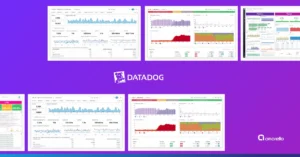
Reading time 2 minutes
Before 2020, online or distance education was considered an educational modality for people with little time, discarding the schooling model, but as of March 2020 this method became the fundamental tool for learning for the nearly 5 million higher education students in Mexico, who had to quickly introduce themselves to the use of digital platforms for education.
The numbers of education in Mexico
Let’s take a look at some relevant figures about Mexico’s Student’s Day:
- According to the Integrated Higher Education Information System (SIIES), there are 4,134 public and private higher education institutions in the country with more than 6,600 campuses.
- During the 2020-2021 school year, enrollment was 4.9 million students, slightly higher than the previous school year (1.1%).
- 65% of the students were enrolled in public institutions of higher education.
- According to the ENIGH 2020 the average quarterly expenditure per household on educational items and services is $1,789 pesos (includes all educational levels).
You may be interested in: User Intent: Understanding your users’ search intent
The legacy of a pandemic
For 2020 the educational schemes were modified derived from the recommendation of social distancing, because of the impacts of the COVID-19 pandemic. For this reason we list the main effects of this event according to the Survey for Measuring the Impact of COVID-19 on Education (ECOVID-ED) 2020:
- For the 2019 – 2020 cycle, in 28.6% of households with population aged 3 to 29 years old enrolled made an additional expenditure to purchase smartphones, in 26.4% to hire fixed internet service and in 20.9% to purchase furniture such as chairs, tables, desks or adapt space for study.
- However, a different behavior was identified in the use of electronic devices used for distance classes and school activities by level of schooling. In the case of the higher education population, 55.7% used a laptop computer as a tool to receive classes and 31.8% used a desktop computer (2020 – 2021 cycle).
- Regarding the time dedicated to classes and school activities per day, 35.7% of those enrolled in higher education dedicated 3 to 5 hours, while 57.5% dedicated 6 hours or more.
Read now: Mother’s Day in Facts
- In relation to school dropout, 5.2% of the population between 19 and 24 years of age reported not having enrolled in the 2020 – 2021 school year for reasons related to the pandemic.
- In addition, among the reasons for not enrolling in the 2020-2021 school year, the response for lack of money or resources stands out (1.5% of the population between 19 and 24 years old and 10.9% in the case of the population between 25 and 29 years old).
- 13.1% of the 19 to 24 year olds, as well as 20% of the 25 to 29 year old group mentioned that they did not enroll because they had to work.
- Overall, 56% of students aged 19 to 29 are very willing to attend face-to-face classes again.

Positive effects
Undoubtedly, the pandemic forced some sectors such as education to physically move away from their work and/or study centers, however, it also represented advantages such as:
- Saving time in transfers.
- Cost reduction, at least in terms of transportation and food.
- 24/7 access to information
- Use of didactic tools, such as videos, documentaries, virtual classrooms, etc.
- In many cases it generated autonomy, discipline and responsibility in students, especially at the higher education level.
In your case, was distance education a positive or negative experience?
Sources:



